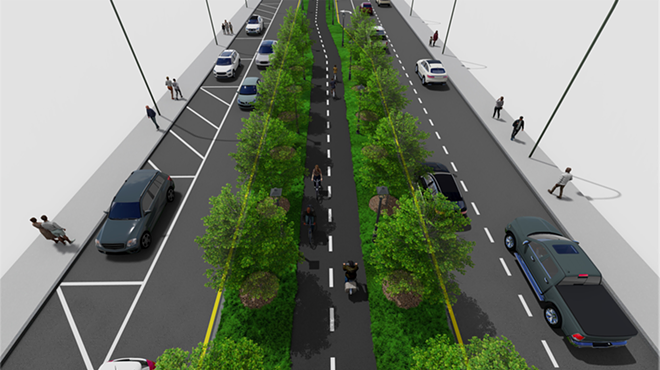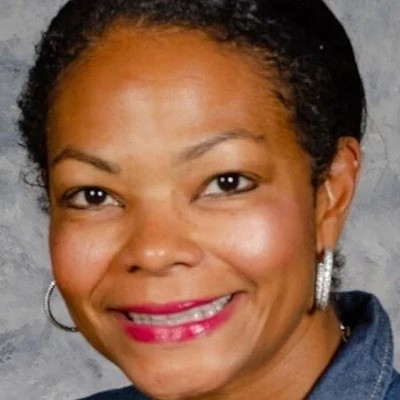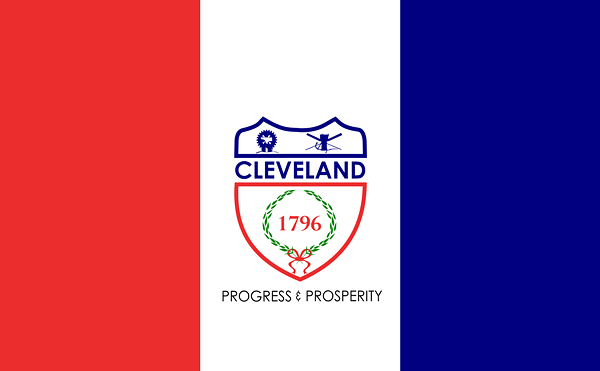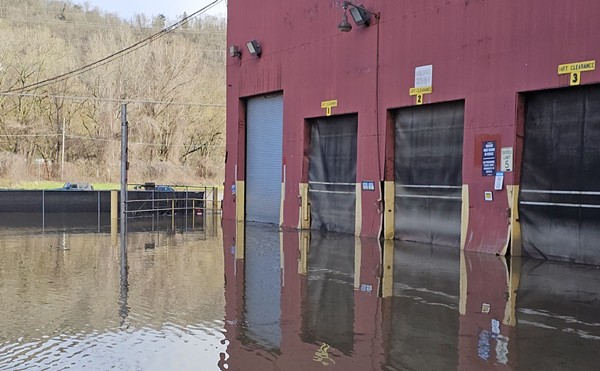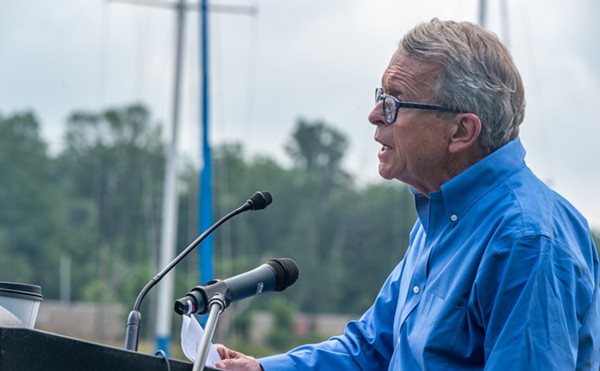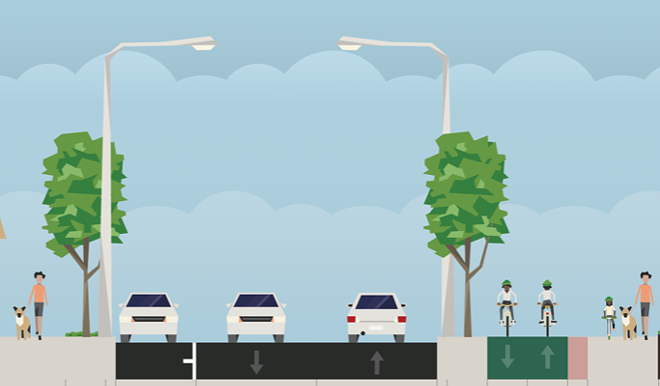
The updated concept renderings, which were unveiled at Urban Community School off Lorain Avenue and 49th Street, showed off what two miles of the street could look like by 2026 or 2027: driving lanes tightened to 12 feet; brand new ramps and road aprons; widened sidewalks and tree planters.
And, of course, the prime mover of the plan since the beginning: a two-way, eight-foot wide bike lane that would run—separated from car traffic!—from the Hope Memorial Bridge at West 20th to the West 65th intersection in front of Michael Zone Recreation Center.
"It was decided long ago that bikes and pedestrians are obviously a priority on Lorain," Douglas Blank, the associate vice president at Michael Baker International, the firm who designed the city's plans, said. "To try and to move the curb lines and improve the streetscape."
But making over Lorain, with its overwhelming hardscape, into a fashionable cyclist and pedestrian-friendly corridor comes with an unavoidable rub: having to deal with the consequences of doing away with on-street parking spaces. That two-mile stretch of Lorain currently has 335 on-street spaces; the Midway could repurpose anywhere from a quarter to a half of them.
It was a prime topic at Thursday's meeting, where city planners mingled with bike advocates, local residents, and stakeholders. It's a problem the city is approaching with an optimist's eye. In their minds, the $30 million project, for which $12 to $15 million is currently raised, would help incentivize more cyclists and walkers to trek down a much safer Lorain. (Leaving, of course, their cars at home.)
"People drive recklessly. The way Lorain is right now, it's very unorganized," Jacob VanSickle, the director of Bike Cleveland, told Scene at the event. "Two lanes in each direction with parking sides full. But a lot of times people aren't parked there, so people treat it like four lanes. I mean, I biked here today. The way it currently is—it's horrible."
Businesses eyeing the poster boards marked with Post-It criticisms balked at a different horror.
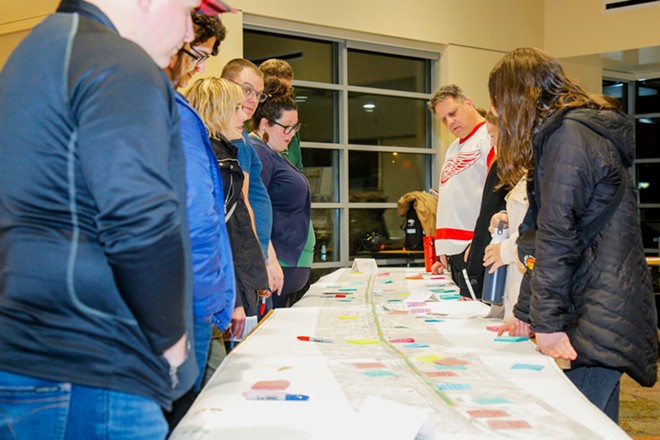
Though he supports a general street redesign, Oryszak can't help but consider the "realities" of how his clientele order food in 2024, whether it be through DoorDash or from a curb-lane pickup. He fears the Midway being constructed—and removing hundreds of on-street spaces—without plans to add a parking garage, or two, would be disastrous.
"Seventy percent of my customer base is from the suburbs," he added. "I get calls all the time: 'We're coming here. Where's your parking lot?' 'Well, we don't have one.' And click."
The same concern worries Karen Small, the owner of Juneberry Table, about a block away from Heart of Gold. According to Blank, the Midway built as conceived, whether needing a full repaving or partial, would require at least 18 months of construction.
Small is anxious about that downtime, when Lorain Avenue would become a one-way.
And to deal with the drop in car traffic? "I wish I had a good answer for that. I don't know," she said. "Maybe it's a Covid situation? We do delivery? Catering? I just think it's unfair to change our whole business plan just to tear up the street."
City planners like Matt Moss and Sarah Davis said that future iterations of the Midway will consider drop-off zones and parking agreements with private lots (like the one at McCafferty Health Center off 42nd St.), along with meeting one-on-one with folks like Small and Oryszak to consider more of the retail view.
"One thing we hear a lot is like, 'If you take away the parking here, how am I going to be able to run in and grab something quick and leave?'" Moss said. "And again, that's why we're trying to figure out how to maximize street parking while still achieving all the other goals of the project."
And maybe the parking demand isn't as steep as businesses believe it is. Both Davis and Moss engineered a parking study of Lorain last year, to find exactly the ins and outs and how to respond to them.
"The highest occupancy was 47 percent on the weekend," Davis recalled. "During the week, it's always below 30 percent. So while there is a big change in parking, we also know that having open space on the roadway is another thing in itself."
Blank and Cleveland's Mobility Team, which includes Davis, Transportation coordinator Dave Bass and Complete & Green Streets coordinator Phil Kidd, plan to have an updated version of the Lorain Midway complete by the summer. With that, they'll be looking to federal grants to close the $18 million gap to reach construction phase.
Subscribe to Cleveland Scene newsletters.
Follow us: Apple News | Google News | NewsBreak | Reddit | Instagram | Facebook | Twitter | Or sign up for our RSS Feed

